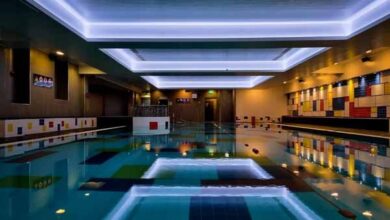Home renovations mark an exciting chapter in homeownership, promising fresh aesthetics and improved functionality. However, amidst the joy of transformation, the aftermath is often underestimated. Neglecting the post-renovation cleanup can affect your home’s visual appeal and health. According to a survey by the American Lung Association, exposure to dust and debris from renovations can exacerbate respiratory conditions, emphasizing the need for meticulous cleanup. For residents in Seattle looking to restore their homes after renovations, prioritizing thorough house cleaning in Seattle is essential to ensure a safe and pristine living environment.
Pro Tip: Begin the cleanup promptly to mitigate potential health risks and restore your living space efficiently.
Health Hazards in Post-Renovation Mess
While the visible aftermath of renovations may seem harmless, hidden health hazards demand attention. Fine particles, including those containing lead or asbestos, can linger in the air. The World Health Organization (WHO) reports that indoor air pollution is responsible for 4.3 million deaths globally yearly. Immediate cleanup is crucial, with studies showing that prompt removal of construction dust significantly reduces the risk of respiratory issues. For residents in Seattle looking to safeguard their indoor air quality, immediate and thorough home cleaning Seattle WA is imperative. Addressing these potential hazards promptly ensures a healthier living space for you and your family.
Pro Tip: Use a high-quality air purifier with a HEPA filter to reduce airborne particles during and after renovation, promoting a healthier indoor environment.
Immediate Cleanup After Renovations
Immediate cleanup after renovations sets the foundation for a successful post-renovation cleaning process. The Environmental Protection Agency (EPA) statistics reveal that swift removal of debris and dust minimizes the spread of pollutants and prevents long-term damage. Employing damp cloths during this phase is critical, as dry dusting can exacerbate the dispersion of fine particles, according to a study published in the Journal of Occupational and Environmental Hygiene.
Pro Tip: Utilize microfiber cloths for surface wiping, as they are proven to capture and retain more dust particles than traditional cleaning materials.
Tackling Construction Dust
Construction dust, a complex mix of particles, poses a serious health risk if not addressed adequately. The Occupational Safety and Health Administration (OSHA) highlights that respirable crystalline silica, a component of construction dust, can lead to lung diseases. Wiping down surfaces with a damp cloth is effective, but incorporating air purifiers equipped with HEPA filters is statistically proven to reduce the concentration of airborne particles, creating a safer indoor environment.
Pro Tip: Opt for eco-friendly, non-toxic cleaning solutions to ensure a thorough cleanup without introducing harmful chemicals into your home.
Cleaning Carpets and Upholstery
Carpets and upholstery are reservoirs for post-renovation debris, harboring dust, allergens, and mold spores. According to a study by the Carpet and Rug Institute, regular cleaning improves indoor air quality and extends carpets’ lifespan. Steam cleaning, a method recommended by the Institute of Inspection, Cleaning and Restoration Certification (IICRC), effectively removes embedded particles, ensuring a hygienic living space.
Pro Tip: Place doormats at entry points to minimize the transfer of outdoor pollutants to carpets and upholstery.
Dealing with Paint Residue
Paint residue left behind after renovations can be a stubborn challenge. According to the Environmental Protection Agency (EPA) report, improper paint waste disposal can contribute to environmental pollution. Testing cleaning solutions on a small, inconspicuous area is crucial, as the Paint Quality Institute recommends, to avoid damaging surfaces. Using mild detergents or paint thinners specific to the type of paint ensures effective removal without compromising the integrity of the materials.
Pro Tip: Donate leftover paint to community projects or recycling centers to minimize environmental impact.
Wiping Down Surfaces and Fixtures
Ensuring that every surface and fixture is thoroughly wiped down is integral to a comprehensive post-renovation cleanup. The American Cleaning Institute emphasizes the importance of proper cleaning solutions for different surfaces. A study in the Journal of Hospital Infection recommends using microfiber cloths for cleaning, stating that they are more effective in capturing and removing bacteria than traditional cotton cloths.
Pro Tip: For metal fixtures, a solution of vinegar and water cleans and restores shine.
Ventilation System Cleaning
The HVAC system, a vital component of indoor air quality, can accumulate significant dust and debris during renovations. According to the National Air Duct Cleaners Association (NADCA), neglecting HVAC system maintenance can lead to increased energy consumption and compromised air quality. Replacing filters, cleaning air ducts, and scheduling professional HVAC maintenance ensures optimal performance and healthier indoor air.
Pro Tip: Regularly change filters and consider installing air purifiers to complement the HVAC system in maintaining clean indoor air.
This comprehensive guide will continue to explore various aspects of post-renovation cleanup, providing insights and tips to ensure your living space is aesthetically pleasing but also safe and healthy.
Floor Cleaning Techniques
Different flooring materials demand specific cleaning approaches post-renovation. According to a study published in the Journal of Applied Microbiology, neglecting floor cleaning can accumulate harmful bacteria. Hardwood floors require a gentle touch, using manufacturer-recommended cleaners, while tile and laminate flooring benefit from a combination of mild detergent and water. Proper floor cleaning enhances the visual appeal and contributes to a hygienic environment.
Pro Tip: Invest in doormats and encourage a ‘no-shoes indoors’ policy to minimize introducing external contaminants to your freshly cleaned floors.
Window and Glass Cleanup
Windows and glass surfaces often bear the brunt of post-renovation residue, affecting interior and exterior aesthetics. According to a report by the Glass Association of North America, untreated glass can accumulate pollutants over time, diminishing its transparency. Streak-free window cleaning is essential for a clear view, and vinegar-based solutions, as the International Window Cleaning Association recommends, can effectively cut through stubborn stains.
Pro Tip: Clean windows on cloudy days to prevent cleaning solutions from drying too quickly, ensuring a streak-free finish.
Kitchen Cleanup
Post-renovation kitchen cleanup goes beyond wiping down surfaces. The National Sanitation Foundation reports that kitchen sponges can harbor harmful bacteria, emphasizing the importance of regularly replacing them. Cleaning appliances, cabinets, and countertops with appropriate solutions ensures a visually appealing kitchen and contributes to a safe food preparation environment.
Pro Tip: Deep clean kitchen appliances, such as refrigerators and ovens, to eliminate any lingering odors or residue from the renovation process.
Bathroom Deep Clean
Bathrooms, often a focal point of renovations, require meticulous post-renovation cleanup. A Journal of Applied Microbiology study highlights that mold and bacteria thrive in moist bathroom environments. Cleaning grout, tiles, and fixtures with antimicrobial solutions are essential for preventing the growth of harmful microorganisms and maintaining a hygienic space.
Pro Tip: Install proper ventilation in the bathroom to reduce moisture levels, minimizing the risk of mold growth.
Handling Debris in Outdoor Spaces
Outdoor areas are not exempt from post-renovation debris. According to a report by Keep America Beautiful, effective outdoor cleanup contributes to a healthier environment and community. Raking and disposing of debris in gardens, power washing patios, and sweeping walkways enhance curb appeal and prevent pollutants from entering your home.
Pro Tip: Consider composting organic debris to create nutrient-rich soil for your garden.

Disposal of Construction Waste
Responsible disposal of construction waste is paramount for environmental sustainability. According to the Environmental Protection Agency, construction and demolition waste constitute a significant portion of landfills. Recycling materials like wood, metal, and cardboard reduces the environmental impact of your renovation project.
Pro Tip: Work with local recycling facilities or hire a waste management service to ensure proper disposal and recycling of construction waste.
Organizing and Decluttering
The post-renovation cleanup provides an excellent opportunity for organizing and decluttering. The National Association of Professional Organizers reports that a cluttered home can contribute to stress and anxiety. Sorting through items, donating unused goods, and establishing organized spaces create a visually pleasing environment and contribute to a more relaxed and efficient daily life.
Pro Tip: Implement storage solutions like baskets and shelves to maintain an organized and clutter-free home.
Inspecting for Hidden Damages
Post-renovation inspections are crucial for identifying potential hidden damages. According to a study by the National Institute of Building Sciences, overlooked damages can lead to costly repairs in the long run. Checking for water leaks, structural issues, and electrical problems ensures a proactive approach to home maintenance.
Pro Tip: Hire a professional inspector to conduct a thorough assessment, especially if your renovation involves significant structural changes.
Safety Measures During Cleanup
Implementing safety measures during the cleanup process is paramount. The Centers for Disease Control and Prevention recommends using proper personal protective equipment (PPE) to minimize exposure to dust and harmful substances. Wearing masks and gloves protects against respiratory irritants and skin contact with cleaning solutions.
Pro Tip: Keep a first aid kit on hand during cleanup to promptly address minor injuries.
Post-Cleaning Inspection
A post-cleaning inspection is the final step to ensure every area is noticed. According to a study published in the Journal of Environmental Health Science and Engineering, thorough inspections significantly reduce the chances of post-renovation health issues. Checking corners, ceilings, and hidden spaces guarantees a comprehensive cleanup.
Pro Tip: Enlist a second pair of eyes to assist in the inspection, ensuring a meticulous assessment of your living space.
Professional Cleaning Services
Knowing when to consider professional cleaning services is essential. The American Cleaning Institute suggests hiring experts for complex tasks or when time constraints are present. Professional cleaners use specialized equipment and have the expertise to tackle challenging post-renovation cleanup effectively.
Pro Tip: Obtain quotes from multiple cleaning services and inquire about their experience in post-renovation cleanup before making a decision.
Conclusion
In conclusion, post-renovation cleanup is not merely a cosmetic endeavor but a fundamental step in maintaining a healthy and harmonious living environment. As we’ve explored in this comprehensive guide, the statistics and research emphasize the importance of each facet of the cleanup process. By investing time and effort into meticulous post-renovation cleaning, you reap the aesthetic benefits and create a safe, welcoming haven for you and your loved ones.





